Kodak managed both in one go.
A friend is cleaning house and came across several cameras from the dark ages. A couple which needed a mechanic’s attention went to a nerdy friend (who could not take a good picture to save his life), the one with the micro-tool kit. The other two came my way for auction on eBay, where they will be listed this weekend.
One is prosaic. A 35mm Canon Rebel. The plastic content in this electronic wonder is so high that when I first took it out of the box it almost flew out of my hand. It’s that light. Both the camera and date-imprint batteries were shot so I replaced them (have you priced lithium batteries recently? Phew!) and ran a roll of Kodak Gold 200, provided by aforesaid m-i-l, through it and thence to WalMart for a CD ‘print’. All seems well and despite being made from the purest cheddar, the camera showed itself to be remarkably effective. Autofocus is snappy and exposure automation just so. I went through this little routine to maintain my standing as one of the three honest sellers on eBay. You know how that goes. When I say ‘works perfectly’ I have to first know that is true. It’s a nice piece but strictly a throw away camera in the sense that there is no heirloom value or exquisite engineering to ponder. In that respect it resembles most of its digital successors.
The other, however, is something quite special. Going by the splendid name of Kodak Medalist II, it’s no exaggeration to say that this tool, nay, weapon, competes with San Francisco’s Golden Gate Bridge for uncompromising solidity. The American military was winding down when Eastman Kodak unleashed this beast on the world in 1946 and I suppose there must have been lots of aircraft grade alloys lying around ready to be recast into more peaceful tools.
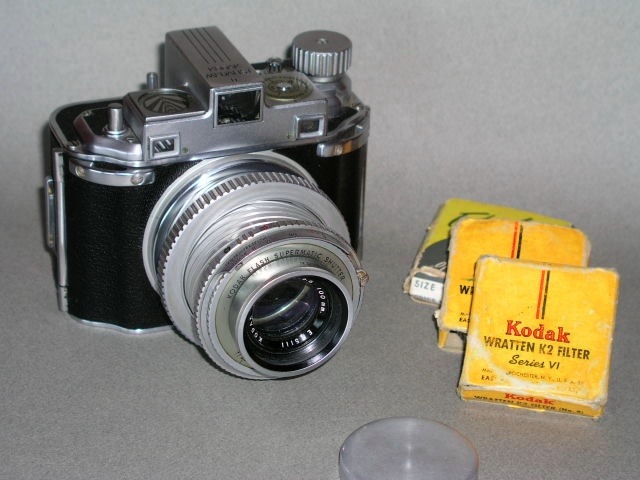
The Medalist II (if it competed anywhere, it was in weightlifting where that Medal was earned) takes eight pictures on now defunct 620 film, sized 2 1/4″ x 3 1/4″. Technicians exist to convert it to 120 if needed, but to my utter amazement, B&H still lists 620 flm in several flavors, including Ektachrome, Portra, Tri-X, T-Max 100 and 400, Plus-X (!) and Fuji Velvia! Anyway, this camera makes a big negative.
What’s so unusual about handling this boat anchor, excuse me, camera, is the contrast it presents with my experiences in medium format. Heck, my first medium format camera was a Kodak – I was seven and it was a Kodak Brownie …. yes, you guessed it, 620. One speed (‘clack’) and three apertures, comprised of a drilled disc which was shifted using a lever, but it was as cool as it gets if you ask me. After that I proceeded to twin lens Rolleis, the massive and infinitely capable Rollei 6003 SLR and the sweet Mamiya 6. But none of those could pass the test the Medalist would discharge with aplomb.
It’s the Korean War. You are a Life photographer. The picture you just took of the North Korean terrorist aggressor may be your last because he is armed and you are not. But, his gun jams. With lightning thinking, you whip off the little bugger’s helmet and administer a fatal blow with the Medalist, doing the fallen enemy justice with one more exposure carefully focused on his cracked skull. Now you simply could not do that with the effete Rollei twin lens reflex or anything else in that format. Not until the Nikon F arrived, in time to document America’s first defeat, was there a camera of comparable heft.
Let me illustrate.
First there’s a double helical focusing mount which would do the Ferrari engineers proud. Is that beautiful or what?
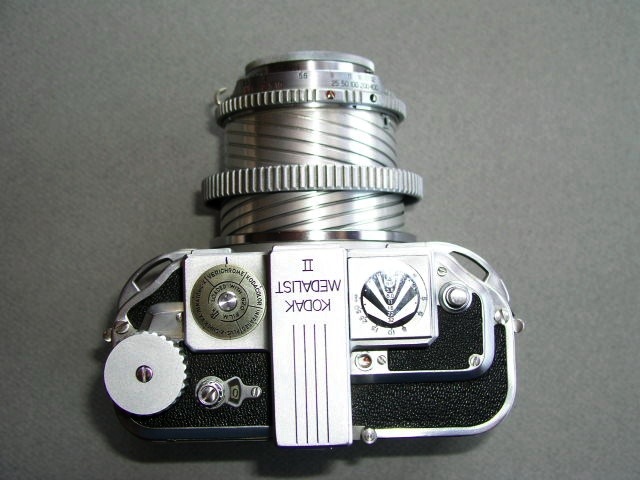
A touch of lubricant on the alloy surfaces and all is sweetness and light.
Then how about the rangefinder which is surprisingly accurate?
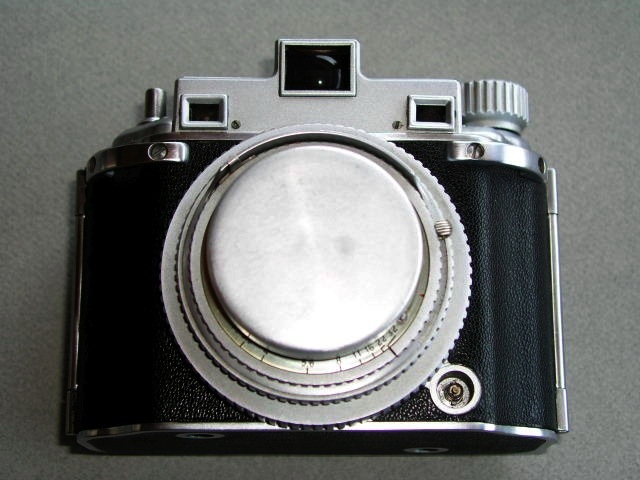
And then the strap lugs, a design borrowed from the chaps who forged the Golden Gate.
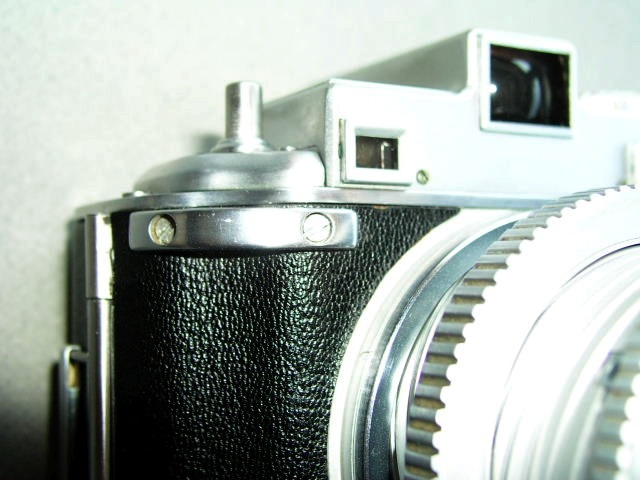
And that neat distance and depth-of-field scale on the top plate:
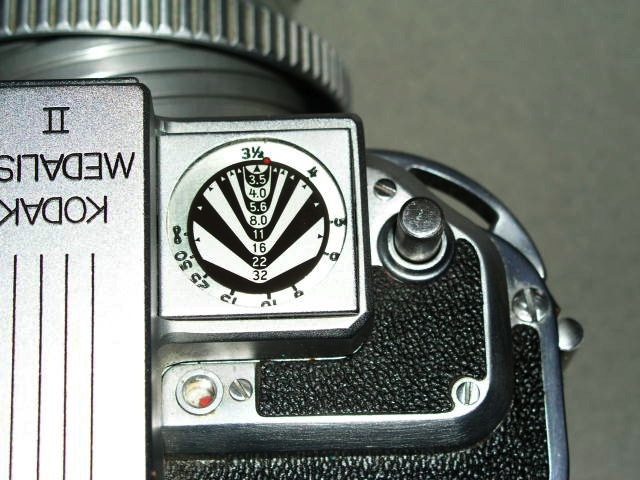
Granted, the engraving quality would drive the boys at Zeiss and Leitz to the men’s room, but heck, it’s easier to clean blood and guts from than the chic stuff they made in Germany.
And lest you think that all this mass hides a lousy lens, think again. The five element, coated Ektar is not to be sneezed at.
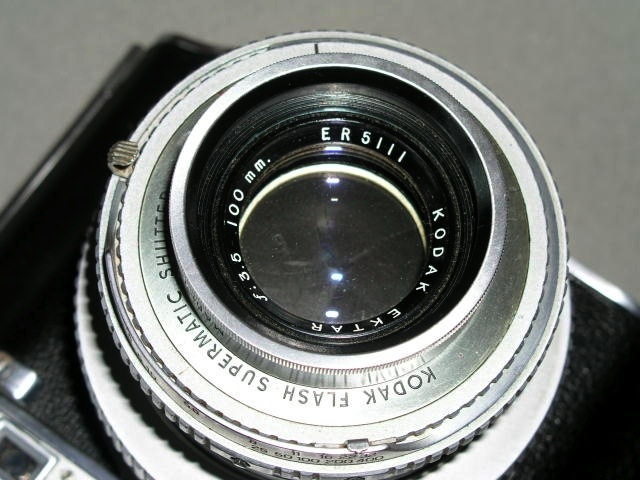
As for the camera back, remember those magnificent tailgates that Detroit gave the world in its station wagons? The ones that would swing to the side or swivel down? Well, Kodak was there first for they designed a camera back that could be swung left or right, depending on which catches you released, or removed all together for cleaning. Just the thing after whacking that twit from Pyongyang. Too bad the Nikon F designers weren’t watching.
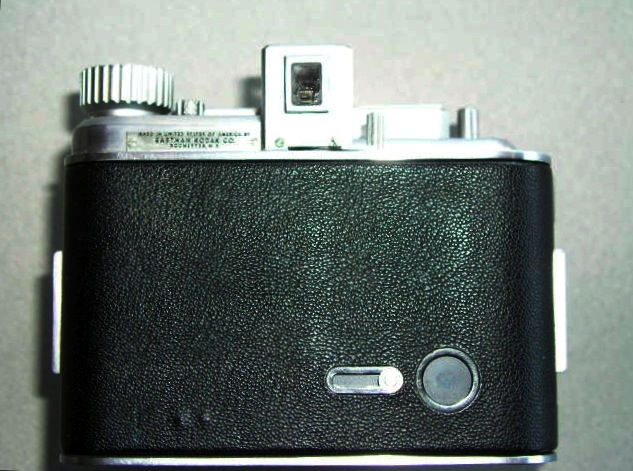
And don’t be fooled by that little red window with the sprung cover. Its sole purpose is to key the first frame; thereafter, the internal toothed shaft counts exposures automatically using a shutter interlock to preclude double exposures. You still have to cock the shutter manually, but intentional double exposures are delegated to a separate lever to the right of the eyepiece. Nothing wrong there.
OK, so the Medalist is no Leica M, trading mass for class, but my goodness, what a magnificent showpiece.
Now, Kodak, how about recreating some of this design genius in your contemporary wares. Surely, all the great industrial designers do not reside at Apple?